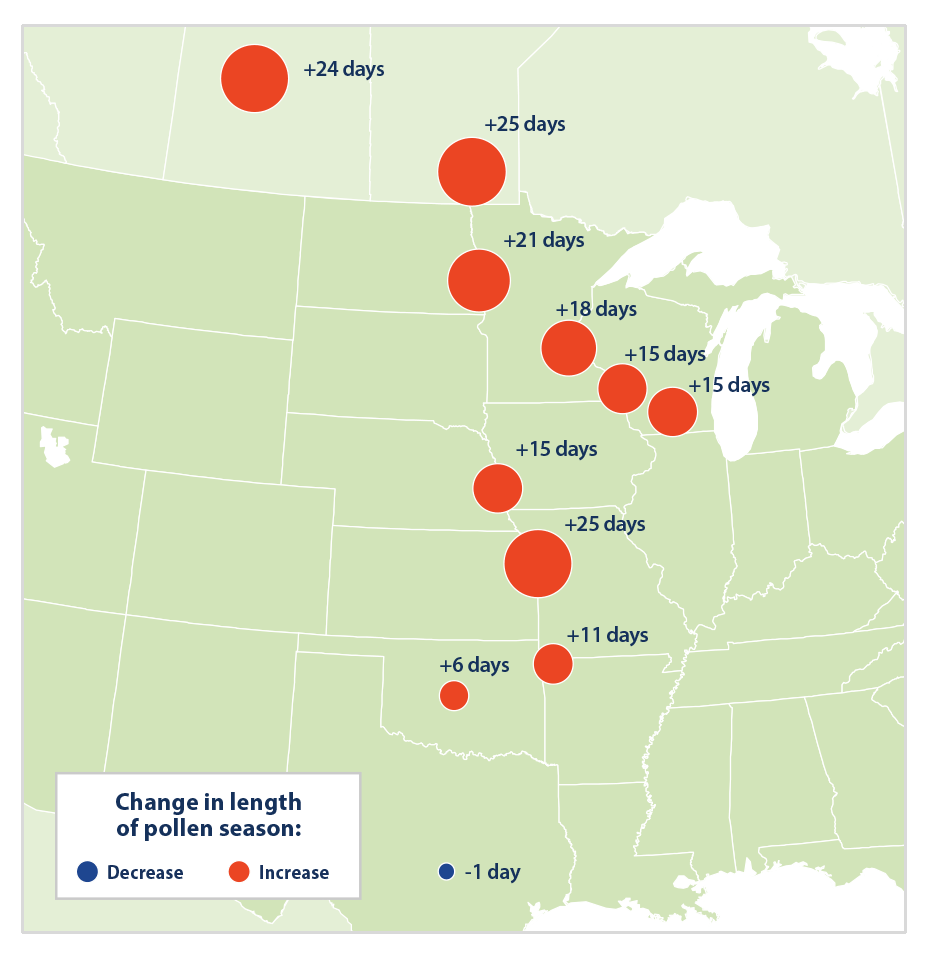Asthma Reactions Will Be Heightened This Fall
August 2018
ONALASKA, WI —
For those with asthma, autumn has traditionally been a pain; adding seasonal allergies on top of asthma symptoms can only increase suffering. While the rest of the world frolics through pumpkin patches, asthma sufferers are summoned indoors, avoiding chest tightening reactions. This year is projected to be even more painful, as a study by Ziska et. al shows the length of pollen season is growing year after year, especially in the Midwest. But how does that impact asthma?
Asthma symptoms increase during fall because nearly 60% of people with asthma have an underlying allergy to blame, and some very strong allergens start blowing around once the summer cools off. The non-allergy affected may find fall to be consistent with the rest of the year, but the remaining 60% experience a spike in symptoms once summer wraps up and turns into fall.

- Cough
- At night
- During play
- With exertion
- Shortness of breath
- Chest tightness
- Wheezing
- Frequent respiratory infections
Ragweed is the most prominent fall allergy – affecting 23 million people each year. The study by Ziska looked primarily at ragweed and found that people are experiencing this misery up to 25 days longer than they did 20 years ago. Other elements that can cause issues in the fall are:
How can you prevent reactions?
Don’t lose hope! There are a few ways to prevent reactions – for both allergy and allergy related asthma – and make fall a little more fun. Mike Kachel, RPh, Allergychoices Pharmacy Director, offers this advice to patients: “Don’t wait until it’s in full bloom to start treatment. Whether it’s immunotherapy for long-term impact or an antihistamine or nose spray to relieve symptoms temporarily, use it early.” Now is the time to start your defense towards fall allergens.
Once the season hits, people can:
- Shower at night
- Keep windows closed and air conditioning running
- Do a sinus rinse
- Wash clothes after being outdoors to avoid bringing pollen indoors
Building a defense from the inside-out makes the biggest difference in alleviating pesky asthma symptoms. Treating the root cause of allergy can reduce allergy symptoms, but it can help fight asthma, too. Sublingual immunotherapy – allergy drops taken under the tongue – is a convenient, safe, and effective treatment that doesn’t require weekly office visits.
Mike explains that with treatment like sublingual immunotherapy for long-term tolerance, or even antihistamines that are now available over the counter to temporarily reduce symptoms, it’s easy to take control of your symptoms and manage asthma this fall.
###
About Allergychoices, Inc.
Allergychoices began in 2000 as the first dedicated education, advocacy, and networking resource for patients and physicians who were interested in sublingual immunotherapy to treat the underlying cause of allergic disease in the U.S. It was founded by allergy providers who developed the La Crosse Method™ Protocol, based on decades of clinical experience at their Allergy Associates of La Crosse practice in Wisconsin. Today, the company has grown to be a leading healthcare services company that provides tools that enable physicians across the U.S. to provide sublingual immunotherapy within patients’ reach, and gives allergy sufferers information and access to treatment options using custom sublingual immunotherapy close to home.
